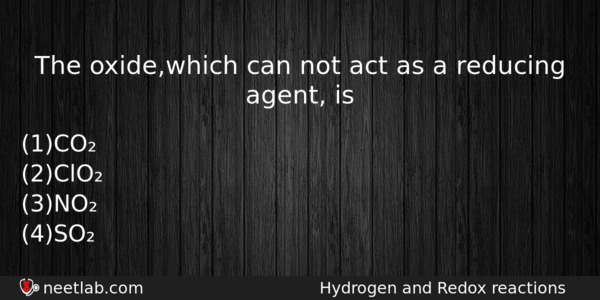| ⇦ | 
| ⇨ |
The oxide,which can not act as a reducing agent, is
Options
(a) CO₂
(b) ClO₂
(c) NO₂
(d) SO₂
Correct Answer:
CO₂
Explanation:
No explanation available. Be the first to write the explanation for this question by commenting below.
Related Questions: - A hydrocarbon contains 20% hydrogen and 80% carbon.The empirical formula is
- Which property of colloidal solution is not dependent on the charge on colloidal
- Which of the following aqueous acid is most acidic
- In acidic medium, the equivalent weight of KMnO₄ is
- If uncertainty in position and momentum are equal, then uncertainty in velocity
Topics: Hydrogen and Redox Reactions
(174)
Subject: Chemistry
(2512)
Important MCQs Based on Medical Entrance Examinations To Improve Your NEET Score
- A hydrocarbon contains 20% hydrogen and 80% carbon.The empirical formula is
- Which property of colloidal solution is not dependent on the charge on colloidal
- Which of the following aqueous acid is most acidic
- In acidic medium, the equivalent weight of KMnO₄ is
- If uncertainty in position and momentum are equal, then uncertainty in velocity
Topics: Hydrogen and Redox Reactions (174)
Subject: Chemistry (2512)
Important MCQs Based on Medical Entrance Examinations To Improve Your NEET Score
18000+ students are using NEETLab to improve their score. What about you?
Solve Previous Year MCQs, Mock Tests, Topicwise Practice Tests, Identify Weak Topics, Formula Flash cards and much more is available in NEETLab Android App to improve your NEET score.
Share this page with your friends

Leave a Reply